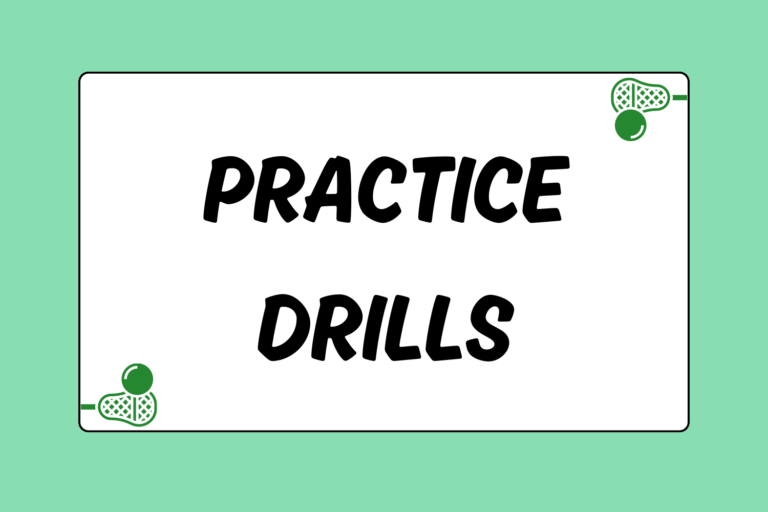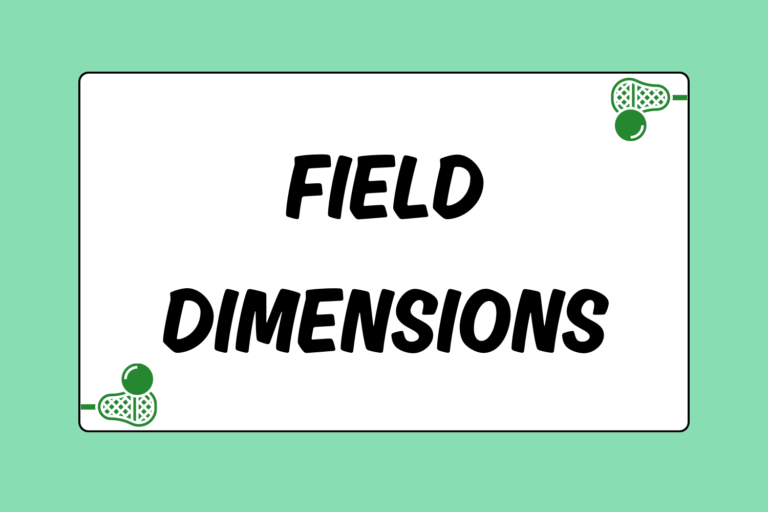It takes a different type of personality to play goalie, and it also takes different equipment than the other field players on the field. Goalies actually wear slightly less padding than other players, enabling them to move quickly towards a shot and get their sticks to the ball.
This is unlike box or indoor lacrosse, where goalies wear very large leg pads that are a cross between hockey goalie leg pads and a baseball catcher’s shin guards. With the top bar on the cage two feet higher than the one in hockey or box lacrosse, shots up high are much more common. Additionally, a lacrosse goalie’s first move is always to step towards a shot, so he needs his feet to be as mobile as possible, and therefore doesn’t wear any leg pads down low.
Let’s take a closer look at the gear that a field lacrosse goalie wears.
On the Head
Lacrosse goalies wear the same helmets as other players, but with one additional piece. A lacrosse goalie will attach a throat guard that hangs down and covers the exposed area of the neck, between the bottom of the facemask and the top of the chest protector.
The goalie’s throat guard very closely resembles that of an ice hockey goalie. It attaches to his helmet in three places: one at each end of the standard throat guard on the bottom of the facemask, and directly in front of the chin. The throat guard hangs down loosely and gives the goalie protection in an area that no other player on the field is afforded.
Chest Protection
To prevent a serious injury to any of the internal organs or ribs, lacrosse goalies wear chest protectors that cover their entire chest from the neck down. Some protectors offer even more protection to areas not normally covered by a goalie’s chest pad, but they’re more expensive. Moreover, some keepers don’t like bulkier chest pads, and will opt for a smaller selection.
Goalies’ chest pads are similar to those worn by hockey goalies or baseball catchers. On higher-end models, extra padding covers the shoulders and collarbone. Some chest pads also have a piece that extends down below the waist to give the keeper a little extra padding for the groin area.
Gloves
While some goalies wear the same gloves as field players, others will wear specialty goalie gloves. Goalies need a little extra protection on the thumbs, as their hands are close to some hot shots, and fingers can easily be broken by a 100-mph rocket.
Goalie-specific gloves offer extra protection in a few different areas. They’re the same makes and models worn by field players, but with a bit extra padding. First and foremost, the extra thumb padding saves many a goalie from broken thumbs, an injury that can sometimes require surgery. The thumb padding is just an extra piece of foam with plastic around it, covered by leather and stitched to the thumb cap on the goalie’s glove.
The other goalie-specific add-on to gloves is an extended wrist guard. This doesn’t offer extra wrist protection, but rather gives the goalie a little extra surface area on the glove to make a save with. Gloves of this make are extremely uncommon these days, and aren’t seen often.
Lower Body
Despite not wearing leg pads, goalies do get a little extra protection down low, providing both form and function. Goalies are the only players on the field who wear pants (not standard equipment), and sometimes they will wear extra padding on their thighs underneath their pants or shorts.
Many goalies like to wear sweat pants instead of the traditional shorts worn by field players. There are a few reasons for this:
- They provide warmth on cold days early in the season.
- They don’t show the pads underneath.
- Baggy sweats can occasionally catch a low shot and alter its flight enough for the goalie to make a save.
No other players on the field wear sweats, but some goalies will only take the field with their sweats on. These keepers will sometimes wear padding on their upper legs or shins under the sweats.
Compression shorts with thin foam padding fit nicely underneath shorts or sweats. Since goalies will inevitably be struck by shots in this area, some like to wear the extra pads. They aren’t too cumbersome, and are pretty inexpensive. Many basketball players who take a lot of body contact wear similar pads.
Occasionally, a goalie will wear soccer shin guards underneath sweats. At risk of non-stop heckling, you can bet you’ll never see a goalie wearing shin guards with shorts on.
Hot Tip: Keep Your Dignity
Goalies who wear leg padding will never hear the end of it from teammates. The constant ripping and heckling is enough to make a keeper never want to wear them again. This is not a sport for people who fear pain, so keep the leg pads at home and show your teammates that you’re brave enough to be in cage!
The Stick
Goalie sticks are much different from the sticks used by other players on the field. They use heads that are much larger than other field players, with a shaft that is generally between the length of a midfielder/attackman’s and a defenseman’s.
The pocket is allowed to be as deep as the goalie chooses. This aids the keeper in catching the ball on hard shots, but also can hinder his ability to throw passes or handle the ball effectively. With a very deep pocket, a goalie must have excellent mechanics on his throws to get the ball where he wants it to go.
Goalie heads can be up to 12 inches wide, while the shaft may be any length up to the maximum 60 inches allowed on the field. Some goalies will opt to use a regular attack or midfield shaft to better handle the ball, while others play with a longer one to be able to make “lucky” saves off the back end, or throw farther outlet passes.
Get in Goal
With a good idea of what equipment is used by goalies, step up and get in the cage! Most goalies don’t actually get hit by many shots once they are comfortable moving towards the ball and knowing how to get their stick to the ball. Plus, making a huge save gives you a ton of adrenaline, and so you may not even feel the pain at all!





